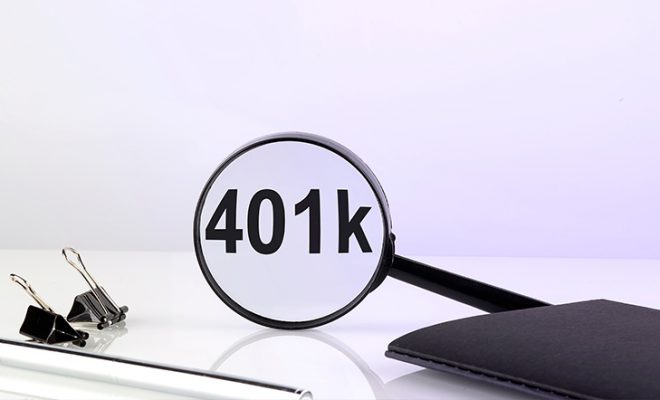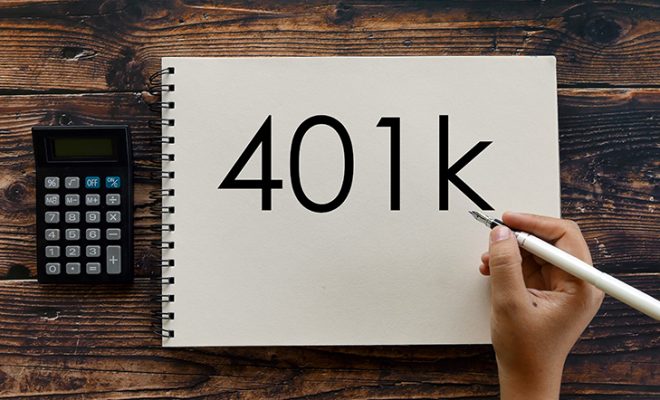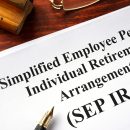Millions Leave Behind 401(k)s When Changing Jobs. Here’s How to Get It Back

The company-sponsored 401(k) is a preferred vehicle for retirement savings. With tax advantages and the potential employer match, it can considerably maximize savings and help you save consistently for your golden years. However, as you switch jobs, the question of what happens to your 401(k) when you quit lingers. According to the Bureau of Labor Statistics, the median number of years for wage and salary workers with their current employer was 4.1 years in January 2022. The median tenure for men was 4.3 years, and for women, 3.8 years in January 2022. Switching jobs is the common norm to get better positions, salaries, and incentives. You may decide to change jobs in the case of relocation to another city for personal reasons. Companies can also lay off employees during economic hardships or in case of low performance, friction, dissatisfaction, etc. No matter the reason, knowing what to do with a 401(k) when you leave a job is essential.
A financial advisor can help you plan your retirement and decide what to do with your old 401(k) account. This article discusses the various scenarios that can affect your 401(k) money and the steps you can take to ensure you do not lose your money.
If you quit your job, do you get your 401(k)?
Yes, you get your 401(k) money when you quit a job. You can use the options below for your 401(k) after being fired or laid off too/
Employees are given the following 3 options to choose from when quitting their job:
1. Withdraw the 401(k) money
You can withdraw all your 401(k) funds when you quit your job. However, it is essential to know that this can trigger your tax liabilities. Most employers offer a traditional 401(k) plan. Since the traditional 401(k) is a tax-deferred account, your investments grow tax-deferred, and you are taxed on your withdrawals. The money you withdraw will be added to your total taxable income for the year and taxed as per the applicable tax slab.
Another critical thing to note is that the Internal Revenue Service (IRS) imposes a 10% penalty on early withdrawals before the age of 59.5. If you take the funds before this age, you will have to pay this penalty on top of the applicable taxes. Even if you are over the age of 59.5 years, you would still pay a higher tax bill as the total withdrawal amount would likely be high.
2. Switch your old 401(k) to the new employer
You can move your funds to the new employer’s 401(k) if the company offers it. There are two ways to do this. You can opt for a direct rollover that transfers the funds from one account to the other. Alternatively, you can use the indirect rollover, where you can take a check from your old employer and deposit it to the new employer. However, you only have a 60-day window to complete the transfer. If the process is delayed, the IRS will consider it an early withdrawal and tax you, along with imposing a 10% penalty if you are under the age of 59.5 years. In the case of indirect rollovers, the old employer also withholds 20% of the fund’s value for federal income tax purposes. They may sometimes deduct state taxes, too.
3. Roll over to an Individual Retirement Account (IRA)
If your new employer does not offer a 401(k) plan, you can consider rolling over your funds to an IRA. In this case, you can open an IRA with a broker, insurance company, bank, or credit union. While this is a good option, the IRA offers lower contribution limits than the 401(k) account. You can contribute up to $22,500 to a 401(k) account with a $7500 catch-up contribution for those aged 50 and older. But you can only contribute up to $6,500 to an IRA with an additional catch-up contribution of $7,500 for people aged 50 or older. With an employer match, you can contribute up to $66,000 in total to a 401(k) plan and $73,500 with catch-up contributions. Evidently, you get to save less in an IRA with lower contribution limits and may experience a shortage of funds in retirement.
How to find lost 401(k) plans
In some cases, employees may not use any of the above-mentioned options and may have forgetten their 401(k) money in the old employer’s account. Over time, it can be hard to locate the plan, especially if you have changed cities, your old employer is no longer around, or for several other reasons. As per the Economic Growth and Tax Relief Reconciliation Act of 2001, employers with forgotten 401(k)s with balances between $1,000 and $5,000 can convert them to an IRA in the employee’s name. But it is important to locate these accounts to access the money. Here are some ways to find an old, forgotten 401(k) plan:
1. Contact your old employer
One of the first things you can do is contact your old employer and ask them for your old 401(k) account details. In most companies, the human resource department keeps such information. They may ask for your Social Security number, name, the exact years you worked with the company, and other similar information. Companies keep records for old employees and accounts for several years after the employee quits, and finding your old 401(k) is usually not hard.
2. Look for your old 401(k) plan statements for information on your account
If you are not able to get in touch with your old employer, have changed cities, or the company no longer exists, you can try to find copies of your 401(k) account statements. You may have them in your email or hard copies stacked away somewhere. Your old statements can show you how much money you have in your plan.
3. Visit the Labor Department’s website
The official website of the Department of Labor maintains a database of old, forgotten retirement accounts. You can visit the website and enter your name, Social Security number, or birthday to locate your old accounts. The database can help you track down the old employer or plan administrator or contact the human resource department to get information on how to withdraw or transfer the money.
4. Check FreeERISA
FreeERISA is another online platform that can help you find information on lost 401(k) accounts. The website is free to use but may require registration first.
5. Go through the National Registry of Unclaimed Retirement Benefits Database
The National Registry of Unclaimed Retirement Benefits is a publically available database for unclaimed assets. You can check your old 401(k) information by entering your Social Security numbers.
6. Check the National Association of Unclaimed Property Administrator’s website
You can go through the National Association of Unclaimed Property Administrators’ website to check all your unclaimed money, even those other than your 401(k) funds.
SPONSORED WISERADVISOR
What to do once you have found your old 401(k)?
Once you have found your old 401(k), you can roll over the money to a new 401(k) or an IRA. You can also cash out the money. But you would have to pay applicable taxes and a 10% penalty if you are younger than 59.5 years.
When deciding what to do with your 401(k), it is essential to evaluate all your options and choose the one that aligns with your investment goals. Depending on your circumstances, there are different options to consider.
Here are some things to note when deciding what to do with your 401(k):
1. It may not be ideal to cash out if you have any 401(k) loans
401(k) accounts allow employees to take loans against their funds. If you are cashing out an old 401(k) account, you must check if you have any loans against the plan. If you cash out the account while the loan is still active, the outstanding balance will be considered defaulted, and you will be taxed on it. The balance amount will simply be treated as an early distribution, and you may incur tax and penalties depending on the amount and your age. While you may not likely have a loan against an old forgotten account, it is still important to know all the rules to make an informed decision.
2. Consider direct rollovers as they can be less costly
A direct rollover can be a great choice if you are rolling over your 401(k) account into another employer’s plan. The advantage of a direct transfer is that it does not come with additional costs and follows a simple, hassle-free process.
3. Remember that rolling over to an IRA will require additional financial management
If you are rolling over to an IRA, you will have to manage your investments on your own or hire a financial advisor to do it for you. Additionally, it is essential to choose an IRA with broad investment options. Some IRAs offer limited investment opportunities and come at a high cost. Look for an IRA that offers diverse investment options, including stocks, bonds, mutual funds, and Exchange-Traded Funds (ETFs). It is best to take time when looking for an account and pick one that best suits your investment goals.
4. Understand all the 401(k) rules
You qualify for tax breaks when you save in a 401(k) plan. However, these untimely taxes and penalties can rob you of your savings. It is crucial to avoid penalties and taxes for your 401(k) plan by smartly planning your withdrawals. You can eliminate unnecessary penalties and taxes by not withdrawing your money before the age of 59.5. Additionally, you can avoid the 20% federal tax by not opting for an indirect rollover.
5. Make qualified distributions if you are over the age of 59.5 years
If you are over 59.5 years, you can make qualified withdrawals from your account instead of cashing out the funds in a lump sum. This can help you cut down your tax liabilities to an extent. You will also pay the 10% penalty at this age.
6. Keep track of your 401(k)s when you shift jobs
Switching jobs or careers is the new norm these days. When you move from one job to another, remember to take action on your 401(k) there and then. It can be hard to remember your old 401(k)s after a certain point. If you know you will move from one job to another over and over in your career, it can help to consolidate your savings in one 401(k) or IRA. It makes it easier to manage your money and eliminate taxes and penalties.
Ultimately, deciding what to do with your 401(k) depends on your unique circumstances and investment goals. When making your decision, consider the tax implications, fees, and investment options of each option. It is essential to take the time to research your options thoroughly and consult with a financial advisor if necessary.
To summarize
Deciding what to do with your 401(k) can be a challenging decision. There are several options to consider, such as direct 401(k) to 401(k) transfers, IRA rollovers, cashing out, etc. It is also essential to assess the impact of 401(k) loans, early withdrawal penalties, and taxes before you make a decision. While you can track your forgotten old 401(k)s through multiple databases and methods, it can still be advised not to lose track of your money. This can help you manage your money better and potentially earn higher returns by staying invested in the right investments suitable for your financial goals, risk appetite, and investment horizon.
Use the free advisor match service to find a suitable financial advisor in your area who can help you understand how to get your 401(k) when you quit. All you have to do is answer a few simple questions based on your financial needs, and the match tool will help connect you with 1-3 advisors best suited to meet your financial requirements.









